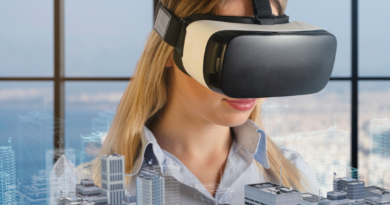Facing The Future: 5 Things To Expect From The Workplace Of The Future
It’s never easy to predict what our average workplace will look like in the future. We only have the past to help draw sound conclusions, and it’s evident that we’ve come a long way from even just a few short years ago.
Still, there are some tell-tale signs that significant changes are ahead. We can say with a reasonable amount of certainty that the workplace of the future will be characterized by the following features:
Inclusion and Diversity
Once upon a time, inclusion and diversity in the workplace seemed like a far-off reality. Not everyone had equal opportunities to contribute and influence a workplace, and many people were discriminated against based on their age, gender, culture, religion, or background.
There’s no denying that these problems still exist, but they may not be so prevalent in the future. A variety of programs and organizations are already available to help corporations do better. It may only be a matter of time before people from all walks of life are valued for the unique offerings they can bring to a business, even if we’re not all the way there yet.
Prioritizing Wellness
Working conditions in the United States and other parts of the world were pretty grim throughout the 1900s. Businesses frequently exploited children, and discrimination was both accepted and common. Workers often had to put up with hazardous conditions, and there was no such thing as mental health awareness.
That has been slowly changing, in part due to labor laws, and many large corporations are beginning to promote wellness in the workplace, focusing on physical, emotional, social, spiritual, and intellectual health.
More Workplace Versatility
Workplace versatility is something that can benefit both employers and employees in the future. Indeed, it is already having an impact. Technology like cloud storage and Robotics Process Automation (RPA) have enabled us to easily access and automate projects from anywhere we have internet access. This has been remarkably freeing.
Employees can work from the comfort of their own homes or a tropical island if they wish. Employers can hire talent from anywhere in the world, utilizing the valuable skill-sets of people who may not be available in their immediate area. And with RPA, employees are freed from repetitive tasks to do more value-added (and interesting) work.
Less Manual Labor
While being less active in the workplace may not always be a good thing, less manual labor can undoubtedly benefit those at risk of accidental and repetitive strain injuries.
Technology is becoming more advanced by the day, and previously labor-intensive practices, such as bricklaying, are being replaced with machines that take care of the most exhausting tasks.
As a result, businesses that may have previously only been able to hire physically fit people can draw upon the expertise and skill-sets of people from all walks of life – regardless of their physical capabilities.
Enhanced Workplace Layouts for Creativity and Innovation
Many corporate buildings throughout the world were built during a time when office workers were expected to perform at their best in row upon row of cubicles. Those days are now behind us, but the same office buildings remain.
However, new buildings are being developed all the time, and many of these will have layouts that encourage employees to be creative and innovative. The owners of old buildings, realizing their teams can be even more productive than they are, might even perform renovations to promote interaction, collaboration, and socialization in their spaces.
There’s no way to know with any accuracy what our workplaces will look like in the future, but all the signs point toward inclusivity, flexibility, creativity, and productivity.



